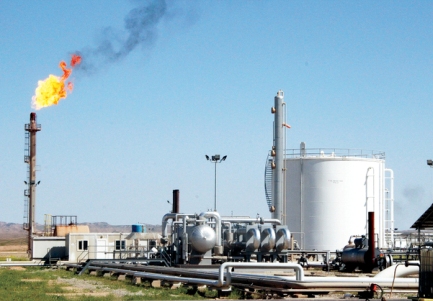 Petroleum
Petroleum Home
Home

Petroleum
Sudan oil:
Oil exploration operations in Sudan actually began after signing an agreement with the American company Chevron in 1975 AD, and based on the good results of exploration work in central Sudan, another bilateral agreement was signed with the same Chevron Company in 1979 AD. This was followed by the conclusion of agreements with the French company Total and the American Sun Oil Company in 1981 and 1982 AD, and after conducting geological and geophysical surveys in various regions of the country during that period, 95 exploratory wells were drilled, including 46 productive wells, such as the Suakin, Abu Jabra, Sharif, Al-Wahda, Talah, and Heglig, but these explorations were not followed by any productive activity. During the period between 1989 and 1999 AD, the Sudanese government signed agreements with various oil companies, including the Canadian companies IPC and SPC in 1991 AD and 1993 AD, the Gulf Company GPL in 1995 AD, the Chinese National Petroleum Company CNPC in 1995 AD, and the Constructium Company in February/ February 1997 AD, and the Greater Nile Petroleum Operations Company (GNPOC) was formed in 1997 AD. This resulted in the formation of a number of exploration companies in different regions of the country.
Actual oil production:
Oil production in Sudan began in the Abu Jabrah and Sharif fields, followed by production from the Adariel and Heglig fields. The total oil production in Sudan until July 1998 was around three million barrels, with 471,629 barrels from the Abu Jabrah and Sharif fields, 196,347 from the Adariel field, and 2,517,705 barrels from the Heglig field. The actual production volume reached 150,000 barrels by the end of June 1999 from the Heglig and Al-Wahda fields. The government expects an increase in production from new fields discovered in the blocks granted to various companies, which will increase Sudanese oil reserves. Actual production now amounts to about 600 thousand barrels per day. This data dates back to the period before the secession of South Sudan, which became an independent state, knowing that 85% of Sudanese oil production in the past came from the south. Sudan's share of oil production declined after the secession of the south to 120,000 barrels per day, of which the state's share is 55,000 barrels per day.
Properties of Sudanese oil
The characteristics of Sudanese crude oil vary depending on its production fields, but in general its most important features can be summarized as follows:
Sudanese crude is of medium density and is close to light crudes. Wax, which is a natural component of the chemical components of petroleum, falls under the classification of paraffinic raw materials, meaning that it is relatively higher than the other components. It is a well-combusted and highly productive material in complex refining conditions. The weaknesses of paraffin materials are only their spill and transfer properties. Sudanese crude oil is characterized by its low percentage of sulfuric substances, and it is one of the best raw materials in the Middle East region with regard to this characteristic due to the lack of side effects of sulfur that are harmful to the environment and engines. Sudanese petroleum is also characterized by the presence of diesel derivative specifications due to its high sixties number, which increases combustion efficiency. The length of the export pipeline starting from the production fields in Heglig, passing through the Khartoum and Al-Obeid refineries, to the Bashaer port on the Red Sea, south of the city of Port Sudan, is 1,610 kilometers. The line's capacity reached 150,000 barrels in the first phase, reaching 250,000 barrels per day in 2000 AD. The cost of the project amounted to more than one billion dollars and was implemented by several specialized foreign companies, all working under the supervision of the Greater Nile Petroleum Operations Company (GNPOC). The installation of the line was completed and opened on June 30, 1999, and is now working well.

Metals
The diversity of terrain, climates, and geological formations has formed the basis for the presence of multiple types of precious metals with large reserves throughout Sudanese territory, the most prominent of which is gold, where the proven reserve is estimated at about 1,550 tons. Sudan is considered one of the largest gold-producing African countries, as it recently reached 93 tons of gold per year. Sudan's mineral wealth is estimated at about 23 elements, most notably gold, silver, platinum, copper, lead and other strategic minerals such as iron, aluminium, manganese and titanium, in addition to precious stones. The state has developed special facilities and easy systems for investment in other minerals: petroleum, chromium, mica, iron, silver, zinc, and others.
 Petroleum
Petroleum Home
Home 
